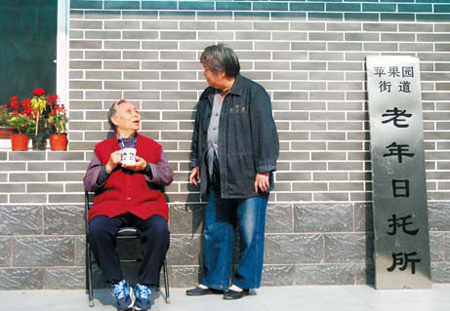China has the biggest population in the world. 1.4 billion people in 2014, up more than 385 million since 1980! And even if the growth is decreasing and will probably hit its peak before 2035, that’s a huge and largely untapped potential for consumer demand! Who are they though? Through this video, we propose an experience to really get a better understanding of Chinese demographic groups. Now, let’s imagine you’re sitting on a bench in Beijing, Shanghai, or any other city in China… and discover about an average life of a Chinese consumer.
Here are below the main information about Chinese demographic groups.
Chinese new-borns
- 55% are boys.
- 33% have a sibling.
- 70% are born in an urban area.
 There’s a high chance that his first taste of infant formula will be an imported brand; China’s trust in foreign products, particularly baby products, is much higher than local brands.
There’s a high chance that his first taste of infant formula will be an imported brand; China’s trust in foreign products, particularly baby products, is much higher than local brands.
If he lives in a tier-1 city, he’ll likely attend preschool education rivalling developed countries, a more western model of creative play and free time, as opposed to regimented learning of language and numbers more popular in the past. If he was born in a city of less than 400,000 residents, however, it’ll likely be far below the global average.
The school will buy all the necessary books and bill hisparents as a yearly fee, which includes all expenses not directly state-funded. This varies from year to year, but averages about RMB200-RMB500 nationally.
If his parents are migrant workers, there’s a chance he’ll be sitting with his grandma. He only gets to seehis parents a few weeks every year and he’ll be cared for by grandparents.
Chinese teenagers
- 1 out of 2 Chinese teenagers owns his own tablet device,
- 44% have their own notebook or laptop.
- 53% use their nickname instead of their real name on social media.
Chinese teenagers composed one of the smallest demographics in the country, with the numbers falling from over 100 million in 2000 to just 56.8 million in 2012.
In the limited spare time they’re afforded, they are given very little freedom by western standards; instead parents and elderly relatives dote on them, doing whatever they can to prepare them for their university exam or gaokao.
University-age Chinese,
- 1 out of 10 of University-age Chinese receive higher education degree
- 1 out of 25 are studying abroad (one of the benefits of that is that when they returns from abroad, and if they meet all the related requirements, they can apply for the social insurance and residence permit known as a hukou in a major city, and gain all the benefits of permanent residents.
- There are about 6 million students graduating yearly.
Chinese young salary worker
- Average age to get married is 24 for women, 26 for men.
- Average age to get their first child is 25 years old.
But that’s only if they have a child.The growing status of women in urban society particularly, and the relative freedom and independent lifestyle choices favoured by young urbanites have been central social factors in the falling number of young families in China.
Their average income in a big city is about 8,000 RMB. If it’s in a second- or third-tier city, it’s much lower than that, but growing fast. Then their disposable income per capita is about 28,600 RMB.
Chinese youth spend about 17,180 RMB per year on consumer expenditures, and that’ll keep going up as they start spending more on household goods, health goods and medical services as they get older. Moreover, they are saving much less than their parents did. China’s savings ratio was 39.3% of disposable income in 2014, 1.5 times higher than the region, but it’s still dropping as more people feel comfortable spending their money.
Chinese middle-aged population
- 4 out of 5 own their own home.
- 1 out 14 owns a car.
- China’s median age in 2014 is 8 years old
Chinese middle aged population do a lot of their shopping online. Tmall, China’s biggest online retailer carried out an extensive survey of online shoppers in 2012 and found that 1.3 million over fifties shop online.
They likely don’t trust domestic brands as much as imported products, especially when it comes to food and personal products such as cosmetics or hygiene.
Chinese middle aged population’s buying habits solidly set around the idea of the “culture” of a product if they live in major cities. Meanwhile, price and convenience are still very important for those living in a second- or third-tier city.
Chinese retirees

In 2014 the number of those over 65 years had reached 158.6 million, up from just 46 million in 1980. By 2020, a projected 15.9% of all Chinese will be over 65 years.
The very elderly (80+ years) will also grow at an extremely fast pace (220%) in 2012-2030 to total 82.0 million in 2030, making up 5.8% of the population.
Chinese retirees are mainly worried about their pensions. It’s likely 50% of their income actually comes from their family, with only 25% coming from state pensions, and the rest from personal income. At least the government has made it easier for them to transfer their pensions when they moved into the big city to join their children in taking care of their grandchildren.
There! That’s China’s demographics summarized for you in a minute. If you want to hear more from experienced, China-based consultants, with all the nuances and details that’ll help you make the most informed decisions, you can contact us at dx@daxueconsulting.comor visit us at www.daxueconsulting.com.




